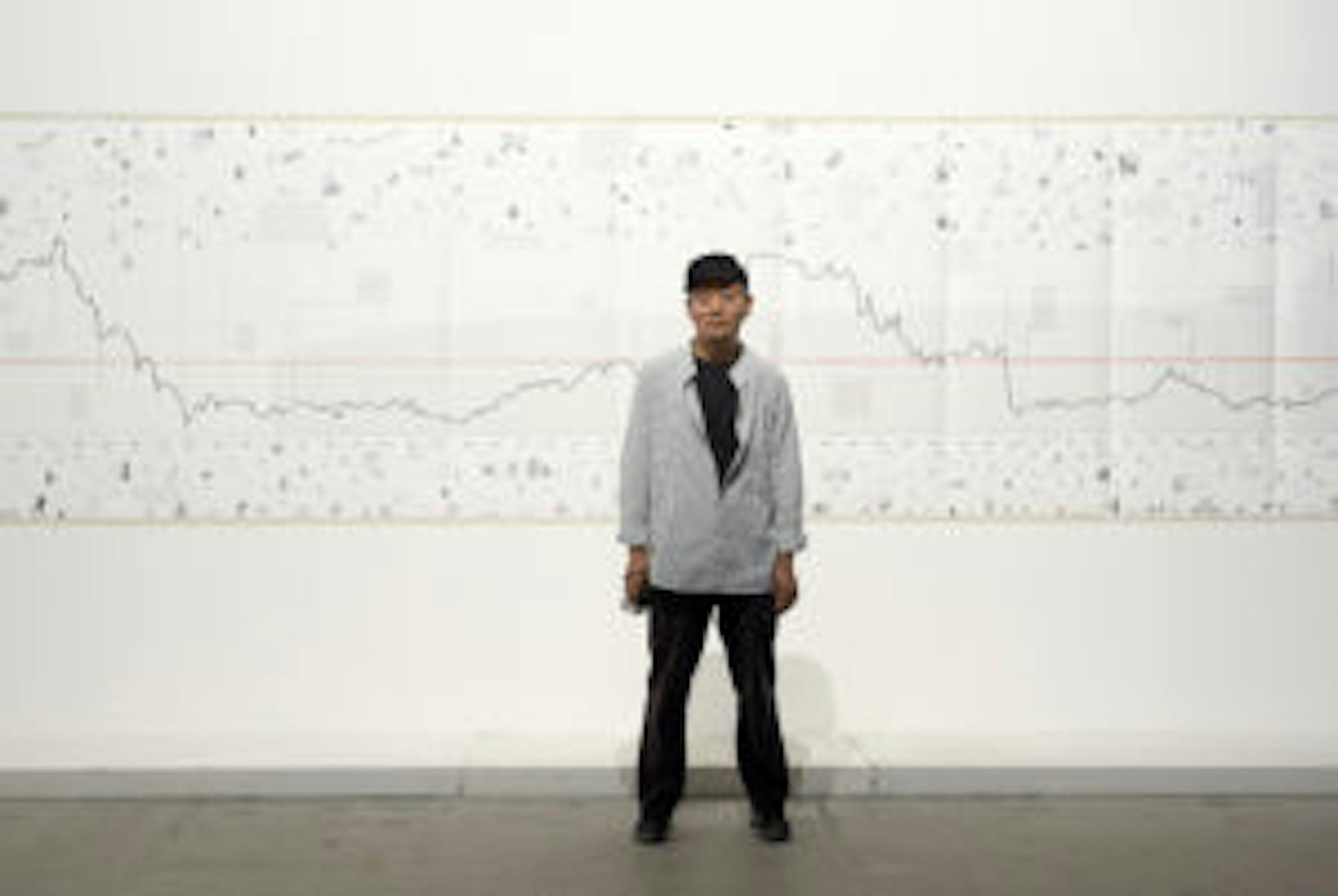
Gonkar Gyatso, the Tibetan-born British artist, was intently making a tsa tsa (or stupa) when I first entered the third-floor studio of the Michael C. Carlos Museum. His current exhibition Family Album, an exploration of people’s identities through photography, is a result of his efforts at redefining Tibetan culture and identity. During Gyatso’s stay on Emory’s campus from Sept. 19 to 28, he engaged the Emory community with a series of talks on his art and Tibetan culture. His exhibition will continue to be on display at the Carlos Museum until the end of November.
As a man who lived his life appreciating and connecting both Eastern and Western Culture, Gyasto opened himself up not only through the exhibition and the lectures, but also through the time he spent talking with people who molded tsatsas with him during his stay.
Gyatso, a man of diverse life experiences, has produced art focusing on identity marked with uncertainty. He was rocked and shaped by the pervasive totalitarian atmosphere that emphasized ideology over freedom of choice during the 10 years of the Chinese Cultural Revolution, a period marked with political unrest and religious oppression during the ‘60s and ‘70s.
“I never really understand Buddhism, although I am a Tibetan,” Gyatso said in a seminar at Emory. He added, “Living in the walled compound for families of party members, a person can not practice religion, otherwise [he or she] will get into big trouble.”
Shaking off the constraint of religious significance and formality as a result of his childhood disconnect with Buddhism, Gyatso found more room for artistic expression and creative adaptation that came to the fore of his works after 2004, a breaking point in his artistic career.
The search for identity was central in both Gyatso’s life and art. He first experienced identity uncertainty during the period of China’s Open Door Policy, when a wave of Western culture swept the country. It was like spring after a long winter: awakening but disorienting.
“In those days, [China’s society], especially the education’s atmosphere, [was] very anti-self expression,” Gyatso said. “So there [was] no way you [could] get into [questioning] identity ... However, when I came across Western influences like individual rights, freedom, self-expression, I suddenly [woke] up and [said], ‘Okay, then what’s my self and identity?’ ”
Gyatso continued his quest for identity and self-expression after leaving China to study arts in London, where the plethora of goods in the supermarket and the vibrancy of the street arts and commercials both surprised and gave him a life-long passion for cities. While in Atlanta, Gyatso said he pursued his appreciation for urban culture by visiting World of Coca-Cola.
Gyatso’s interest in pop culture emerges in many of his Tibetan art works. For example, he used stickers of various sorts, like ones from Disney and Pokemon, to decorate Buddha statues or make Buddha images. This idea of breaking from tradition and centering more on self-expression came from both internal realization and external influence.
“I have been using the Buddha image for years. … One day, when I saw a statue of Buddha placed in a London restroom, I was so shocked because back home Buddha[‘s] image is something holy and sacred that it is always placed above people’s brows and I could never imagined it placed in places like restroom,” Gyatso said.“[However,] I liked the way the non-Buddhist cultures interpret the Buddhism into their own culture, so I tried to associate the Tibetan Buddhism with Western pop culture.”
Gyatso’s works speak to his life and cultural experience. His 2015 collection My Identity of photographs portrays him through four different identities: as a traditional Tibetan artist, as a government-employed artist painting the portrait of Chairman Mao, as a modern Tibetan refugee artist and as a refugee artist in London painting an abstract work. This series showcases not only his change in self-image, but also his adaptation into various political and social backgrounds. In his current exhibition, Family Album, at the Carlos Museum, he again uses photography to explore identity. But this time, Gonkar Gyatso not only wants to show how his family members navigate among their religious, political and social lives, but also how they redefine the new “Tibetaness,” different from the romanticized, monotonic representation of Tibetans.
Self-searching is an ongoing process. In Gyatso’s case, this creative and dynamic process has propelled him into a greater consciousness of his identity and the collective experience of modern Tibetan people who have endured a series of cultural and political upheavals.
A Talk with Gonkar Gyatso on Identity
Courtesy of Rebel Buddha









